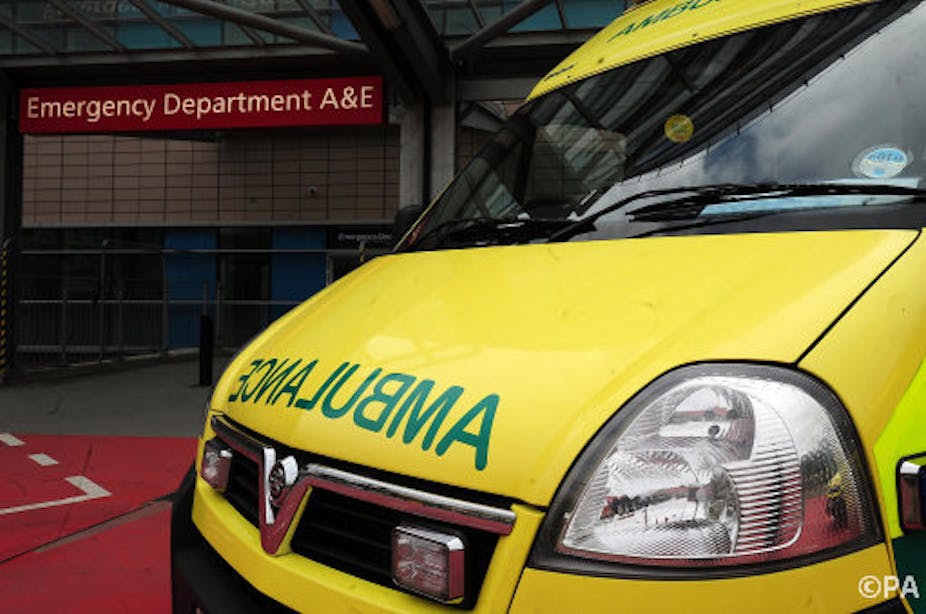NHS 111, the non-emergency helpline set up to ease pressure on the emergency services, actually increased the use of ambulances and emergency care services during its first year of operation, a study has found.
Researchers from Sheffield University compared the performance of NHS 111 in four pilot sites during its first year with three control sites that didn’t use the service. Their report, published in BMJ Open and funded by the Department of Health, found that there was a “statistically significant increase” in calls in the pilot areas that required an ambulance.
Ambulance incidents in the pilot areas rose by just under 3% a month, which was equivalent to 24 extra incidents per 1000 calls that were directed from NHS 111. The authors said that this would translate into an additional 14,500 call-outs for an ambulance service that attended 500,000 incidents a year.
Janette Turner, lead author on the study, said: “In terms of statistical significance, there wasn’t any change in attendances at emergency departments or for out-of-hours primary care.
"But what we did find was that there was a statistically significant increase in calls that required an attendance by the ambulance service.”
NHS 111 was set up to relieve pressure on ambulances and urgent care services by directing patients to local care services that better matched their level of need. An algorithm-based assessment system allows trained call handlers to direct patients to other services or home care.
Not a flying start
But NHS 111 has been fraught with problems since its implementation began. The government committed to rolling the service out nationally in August 2011; by the summer of 2012, the rollout deadline had to be pushed back because various areas needed more time to prepare.
Since then, there have been mounting reports of trouble with the service, including long waiting times, unanswered calls, and even reports of deaths.
Some of these problems have been attributed to the service’s hurried rollout. Meanwhile, NHS Direct, one of NHS 111’s major providers, said in July that it would pull out of its contracts for financial reasons, leaving numerous areas scrambling to find new providers months before launching.
These myriad difficulties might suggest that today’s study simply reveals a further problem for the beleagured service. But despite the serious questions raised by the findings – whether NHS 111 actually increases pressure on emergency services rather than relieving it – the authors stressed that there may be other explanations for their findings.
‘Still sensible’
They conceded that some of their findings could be explained because the service is relatively new. In particular they point out that it is likely that non-clinical call handlers will err on the side of caution, which could lead to a rise in emergency service usage. This effect, said Turner, could subside as the service matures and the call handlers gain confidence.
The authors added in the report that it was “probably unrealistic to expect any one service, such as NHS 111, to do everything, and real improvements may only be gained when a series of co-ordinated measures designed to increase efficiency across all services are implemented.”
In their view, NHS 111’s aim – to provide a single point to guide people to the most appropriate care – is still “sensible”. “When you talk to people that try to access urgent care in particular, rather than emergency care, they often find the process very confusing, because there’s lots of different doorways they can go through,” Turner said.
Confusion in the system was also highlighted in Bruce Keogh’s review into emergency care services that was published on Tuesday. In his review, the NHS Medical Director described “a confusing array of urgent care services” outside of hospital that many people struggled to navigate.
Keogh proposed bolstering the NHS 111 service, which would become a “one-stop” 24-hour over-the-phone service, with a wider range of medical staff available to speak to patients. Staff would have patients’ medical records on hand and be able to book appointments at local A&E departments, GP surgeries and urgent care centres.
But although NHS 111 is proposed by the Keogh review as a potential release valve for pressure on services, the Sheffield study points to shortcomings in the current system that would need to be dealt with – even if some of that could be chalked up to teething troubles.
Alicia O'Caithan, a co-author on the report, called for a continuing evaluation of the system. “Increasing the use of emergency ambulance services is problematic,” she said. “I hope that the NHS 111 services around the country reassess the software decisions [that end with an ambulance being called out] and that they constantly audit the use of this decision endpoint to ensure it is appropriate.”

